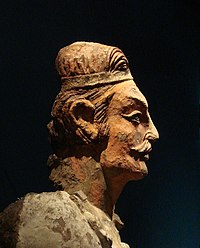Artificial cranial deformation

Artificial cranial deformation is a practice that was popular in some cultures a long time ago. It involved shaping the skulls of babies using special tools and techniques in order to create a specific look. The practice was mostly done for cultural or fashion reasons, and was not done for any medical or health purposes.
Basically, when a baby is born, their skull bones're not yet fused together. This makes it possible to change the shape of their heads by using things like boards or bands wrapped around their heads. The bones in the skull are soft and can be molded into different shapes as the baby grows. Similar to how a ball of clay can be shaped into various forms.
The practice of artificial cranial deformation was mostly used by certain groups of people. For example, in ancient Peru where the practice was done to signify social status, or in ancient Egypt where it was done to signify nobility. The style of the desired head-shape had to do with cultural values and beliefs.
Even though this practice is not done anymore, archaeologists have found many skulls that show evidence of this process. To an Archaeologist, the skull remains are instrumental to understand about the culture and social aspect of the past societies.
Basically, when a baby is born, their skull bones're not yet fused together. This makes it possible to change the shape of their heads by using things like boards or bands wrapped around their heads. The bones in the skull are soft and can be molded into different shapes as the baby grows. Similar to how a ball of clay can be shaped into various forms.
The practice of artificial cranial deformation was mostly used by certain groups of people. For example, in ancient Peru where the practice was done to signify social status, or in ancient Egypt where it was done to signify nobility. The style of the desired head-shape had to do with cultural values and beliefs.
Even though this practice is not done anymore, archaeologists have found many skulls that show evidence of this process. To an Archaeologist, the skull remains are instrumental to understand about the culture and social aspect of the past societies.
Related topics others have asked about:
